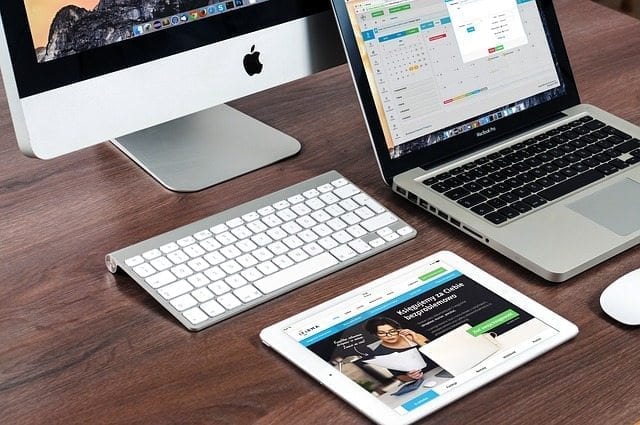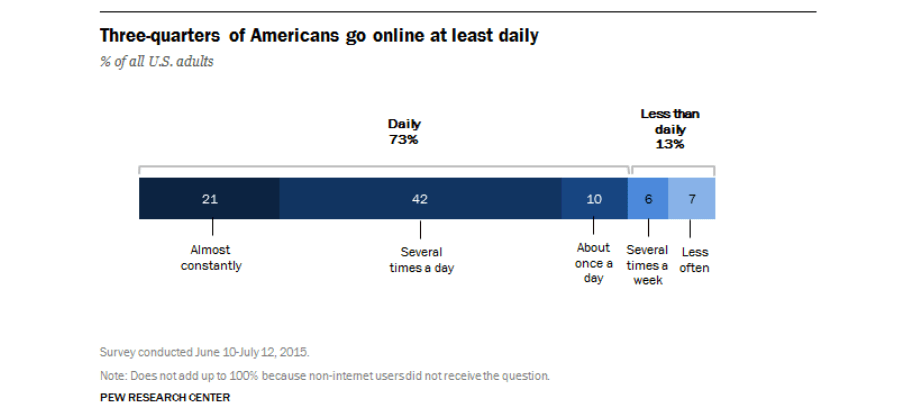How to Master Omnichannel Marketing in a Mobile-First World

Reading Time: 6 minutes
Omnichannel refers to marketing across multiple channels, delivering a seamless marketing experience to each customer regardless of how they access it. The key is seamlessness: reaching out to the same customer across multiple channels isn’t omnichannel unless each channel works as part of a coherent whole.
Using incoherent cross-channel or multi-channel strategies that don’t tie everything together runs the risk of presenting an inconsistent brand voice or of allocating resources to channels that aren’t appropriate to the target audience, funnel stage, or campaign aims. More importantly, it damages the customer experience of your brand by offering your audience material they’re just not interested in. And if you don’t offer an omnichannel campaign, you’re slamming your door in your customers’ faces: 58% of Gen Yers expect to be able to interact with a brand wherever and whenever, so let them – or they’ll go somewhere else. Keep them, and you could wind up with customers worth 8X more to your business.
Customers are becoming more channel-agnostic, freer to hop from one channel or device to another. The place they start the majority of those journeys, though, is mobile.
| Bonus Content
👉 Customer Lifecycle Marketing Campaigns: An In-depth Guide for 2021 [Download Ebook] 👉 Beginner’s Guide to Omnichannel Marketing for 2021 [Download Ebook] 👉 Customer Lifecycle Marketing Campaigns: An In-depth Guide for 2023 and Beyond – [Read Blog] |
It’s crucial for brands to understand that customers never cared about the channel. That was always a necessity, forced on consumers by the requirements of technology. But they do care about brand, about identity, and about values. 73% of US consumers go online every day; 21% are online ‘constantly’

And mobile traffic is rising. Moreover, younger consumers are more likely to be ‘mobile-only,’ accessing the Internet solely through mobile devices. The majority of web browsing journeys start on mobile. The majority of purchase journeys start on mobile. And the majority of emails are opened on mobile. It’s a mobile-first world in two senses: mobile is the default platform for consumers, so it should be for us too; and most journeys that end in a sale, start with a mobile device. (The sale doesn’t necessarily happen on a mobile device, though.)
How do we optimize marketing to accommodate the channel-agnostic, mobile-first consumer?
Plot Channels Against Buyer Journey
The same customer will use different channels at different stages of their journey. So to make sure your omnichannel marketing reaches the right customer at the right time, you’ll need to address customers using the right channel for the stage of the cycle they’re at.
The most effective way to do this is to plot buyer journeys by channel presence and content consumption. Introduce buyer personas or segmentation in order to ensure that appropriate customers see the right marketing messages. If an e-commerce site is seeing purchase traffic through its mobile app from women who previously viewed its Pinterest, but not men – entirely plausible – then it’s clear that messages in that part of the funnel should be oriented toward its female clientele. Assess each channel’s likely funnel stage for each persona and build each persona custom omnichannel funnels using the user data you already have.
Integrate Online and Offline Channels
Channels that used to be treated as totally separate are actually being used by customers as if they were already part of a unified experience. In that sense, marketers are late to the party. Consumers created ‘showrooming’ – visiting a store to scope out products before buying them online at a lower price – and they invented its opposite, web-rooming, too, viewing items online rather than buying them in-store. Crucially, there’s nothing to say consumers actually prefer one channel over another intrinsically. Rather, they’re moving seamlessly between channels – and we need to catch them up.
We can do that by integrating online and offline channels using beacon marketing and consciously providing support for both showrooming and webrooming. If you have an offline presence—a brick-and-mortar store, a stall, a team on the ground – you can provide both and enable both.
Show-rooming
Help customers showroom; after all, if they want your products, the money will wind up in your pocket whether it comes in through the cash register or an online payment collection system. Offer ‘seamless showrooming’ – scannable QR codes let consumers automatically go to the right page in your app or mobile site to buy the item they’re looking at online and have it delivered.
Web-rooming
Webrooming is going to happen anyway. Use location targeting in your mobile app to alert customers to the presence of a product they’ve been eyeing up online when they pass the store – and inside the store, use beacon marketing to guide them right to the product or to other similar items. Remember to make sure these are ‘switchable tracks’ – the same consumer might want to web-room, try on the item, then buy a different item online in-store.
![]()
Device Agnostic Journey
According to Neil Mohan, Google’s VP of Display Advertising, ‘90% of consumers start a task on one device and finish it on another.’ They’re taking a multi-device journey to purchase, and our marketing needs to support them in that. That means we need to construct not multiple funnels but seamless device-agnostic journeys that allow consumers to drive an omnichannel marketing experience themselves. But 65% of those multi-device journeys start on a smartphone and another 11% on tablets, so marketers would be crazy not to build those journeys starting with mobile.
How do we build device-agnostic journeys? By using the data we have from CRM, website and app behaviors, UTMs, and cookies, email and message behaviors, and offline behavior if it’s collectible and relevant, and using that to map personas to journeys. Then, we know how to build a journey for each persona that both supports the behaviors they already prefer and reinforces preferable behaviors at each stage.
Let’s say your data suggests that Sam, a 30-year-old college-educated Midwesterner representative of 15% of your customers, doesn’t like push notifications, opens emails on his laptop but not his smartphone, and tends to buy from his laptop too. But he does use the mobile app for browsing, and his apparently high cart abandonment rate on mobile turns out to be that he’s putting purchases aside to buy later in the month at home on his laptop. Should you try to get Sam to buy on mobile? No, that’s crazy. He obviously doesn’t want to. (He uses the mobile app; it’s not like he doesn’t know it’s an option.)
We have a good idea of the shape of Sam’s buyer journey, though, so we can build him a better one with the same shape. Consider a ‘buy this later’ button to avoid carts being used as a ‘maybes’ collection; try optimizing in-app upselling and cross-selling to show Sam other purchases he might be interested in; and when it’s time to reinforce his journey from the app to the checkout, consider timed, triggered emails offering free shipping. That’s reinforcing the conversion phase of the journey without diverting him from the path he likes.
Micro-moments
The biggest change in marketing isn’t devices, media forms, channels, or even data, and when you consider that 90% off all the data in the world was created in the last two years, that’s a big claim. But it’s true. The real shift is from brands controlling their relationships with consumers to consumers controlling their relationships with brands. That may sound like a vaguely inspiring tweet you once scrolled past, but it’s actually freighted with profound implications for a mobile-first, omnichannel marketing strategy.
Think of it this way: marketing used to be designed to get people to want things. Products, meetings with sales reps, or a certain feeling associated with the service or item on offer, were all the target of protracted campaigns in the past. We were aiming to create a moment when our customers felt, ‘I want that.’
That’s less effective than ever. But the ‘I want that’ moment hasn’t gone away. Instead of creating it, marketers are increasingly looking for ways to detect it, intercept it and service it. These ‘I want that’ moments are referred to as ‘micro-moments’ and they’re in your sights if you play your omnichannel cards right.
Again, this is going to come down to your data. Identify likely triggers for micro-moments, reinforce them if you can and arrange to be there with a range of purchase and contact options so that your customers remain engaged and their desire to purchase is facilitated.
Marketing Automation Platform
While thinking and building an omnichannel marketing strategy is a good start, what needs to be also taken into consideration is how well a strategy can be put into action.
To achieve this, leverage omnichannel-ready marketing automation platforms with features that enable marketers to better target users through highly contextual and personalized campaigns.
Conclusion
Mastering omnichannel marketing will come down to utilizing data to ensure that wherever your customers are, you’re there – not chasing them from device to device but supporting their journey and ready to help them when they want to buy.
*Featured Image Source
Here’s What You Can Read Next |













